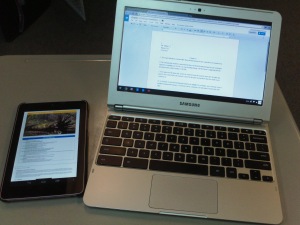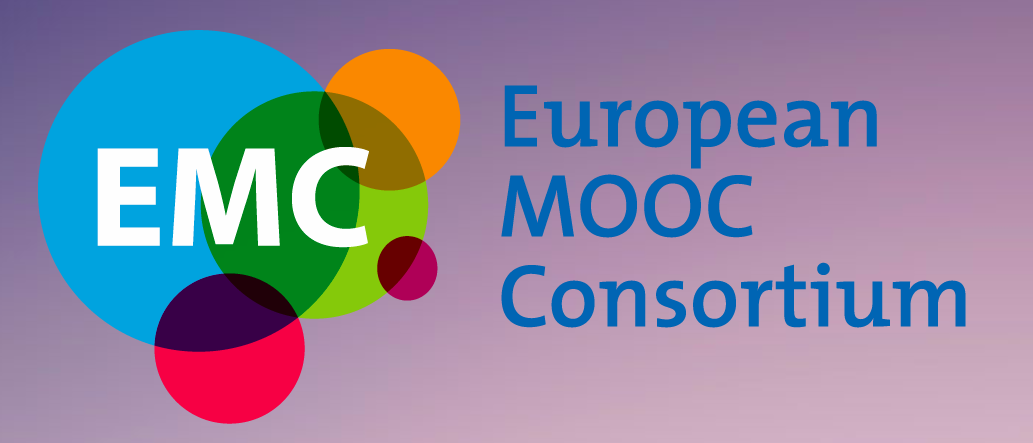Early this year, I had the opportunity to interview several OpenStax College using educators on their experiences of using the materials. Paul Shaber, of Fruitland Schools in Idaho very generously took time out to participate and sent me the following written responses to a series of questions regarding his use of OpenStax College textbooks and his experiences. Thanks so much, Paul!
Please could you tell us your name and position and say a few words to introduce yourself.
Paul Shaber, I am a high school teacher at Fruitland High School in Idaho, a small rural school with about 460 students. I have a Bachelor’s degree in Secondary Ed with certifications to teach Physics and Math.
What do you think are the biggest challenges in education today?
I’d like to discuss two: 1. Money is a big deal. I have a cohort who retired from working in industry and he is regularly unimpressed with the manner in which schools have to be run due to a lack of funds. If we want to do an experiment, often we as teachers are left to find donated materials or buy them ourselves. Running out of paper is a real possibility at my school. Support staff is nonexistent, so much of the time that I or my cohorts should be spending in planning lessons is spent supervising students or helping those who are behind. 2. Time and resources are scarce. For the same reasons mentioned above, much of the time I should be spending on important educational planning gets spent helping those who are most in need. Good resources are hard to find, and many times they will of course cost money that the school district doesn’t have.
How did you first find out about OpenStax College textbooks?
I was searching online for the cheapest college-level text option for my dual-credit physics class. I was planning to purchase 4 or 5 outdated books and have students share them.
Could you tell us a bit more about the institution where you are using the textbooks and what kinds of students are in your class/at your college?
I teach in a small rural community of about 5,000 people in Idaho. Originally started as a farm community, there are still few middle- or upper-class jobs to be had. Some of our students are children of doctors for the nearby hospital because our school has a positive reputation in the area. The largest class of Physics students I’ve ever had was 20 but the average is less than 10. My students are planning on college, and I am certified as an adjunct professor to offer credit through Northwest Nazarene University for my course. There are strict guidelines over what must be taught, but it aligns closely with the same things I have always done in Physics so there is little content difference.
Could you tell us a bit more about how you use OSC textbooks and how, if at all, this differs from your usual practice?
At the high school level, using textbooks tends to be fraught with issues. If you have enough books, students can have their own but they lose them, forget them in their locker, leave them home, leave them in the other car, etc. My students have a download on their home computer, a download on a school computer and sometimes another one for their personal device. The book is always accessible. It allows me to assign homework problems or reading from the text without first making copies or giving students excessive class time to finish.
Please could you tell us a bit more about the cohort(s) of students you teach who use OSC textbooks?
This year I have two sophomores and 9 seniors in my class. The two sophomores are very advanced and hold up well with the group of seniors. All of the students in the class are in the top 5-10% of the school in terms of intelligence and motivation and will consistently endeavor to work hard for a grade.
Paul kindly staged the above photo to show a typical student working arrangement in his class. Paul told me: “… this is approximately how … [students]… would work, with the textbook open on a device and working on the questions on a laptop.”
What impact, if any, has there been on your students as a result of using OpenStax College textbooks?
I can see that the ability to have individual copies of the text and even multiple copies for multiple devices is a big help and students often utilize different copies during the day.
Are your students aware that OSC textbooks are an OER or are different from commercially produced textbooks?
Students can tell that the text they are using is special, if for no other reason than the fact that it is brand new and references things that happened as late as last year. High school students are quite used to having textbooks that are 5-10 years old.
Have you seen any changes in your own practice as a result of using OpenStax college textbook?
I have used more online labs this year from phet.colorado.edu than I ever had in the past. They are useful to help drive a point home although I don’t like for them to take the place of traditional “hands-on” learning. Sometimes we make do with what we have available, and the online labs are always available.
Have there been educational or pedagogical benefits to using OSC textbooks?
The largest benefits are 1. The fact that it is so new, and promises to remain that way. 2. The consistent references to online labs for clarification of learning and 3. The fact it is a college-level text. (I had been using a high school level text and would not have been able to offer NNU credit without a college level text)
Has using OpenStax College textbooks or other OER at your college resulted in any changes to institutional policy and/or practice?
My school is looking into using other OpenStax text for similar college-level courses
What barriers or obstacles, if any, have there been to using OER/OSC textbooks?
Simply because I am so used to having a paper book, it has crossed my mind many times to purchase a printed copy. It is difficult to teach with the electronic copy on the same Smart Board that I am using for student notes.
Do you use other types of OER? If so, in what context, and why?
I use a number of free resources for various classes, including Khan Academy, YouTube, pbs.org and Wikipedia. Although some are not the most definitive sources of information, virtually all research at the high school level needs multiple sources and therefore these resources are perfect.
In an educational context, and perhaps more widely, what does “openness” mean to you?
I think that the world is starting to realize that educational knowledge is far from classified. Since it is a commonly accepted idea that educated people make the world better, it follows that making education easier to attain should be the goal of highly evolved societies. I am proud to see the realization of this idea in my lifetime.





Leave A Comment